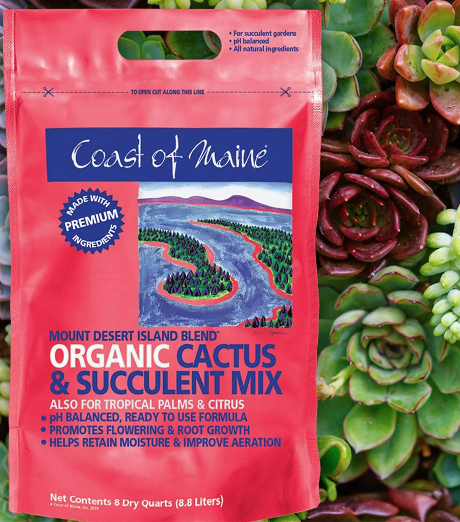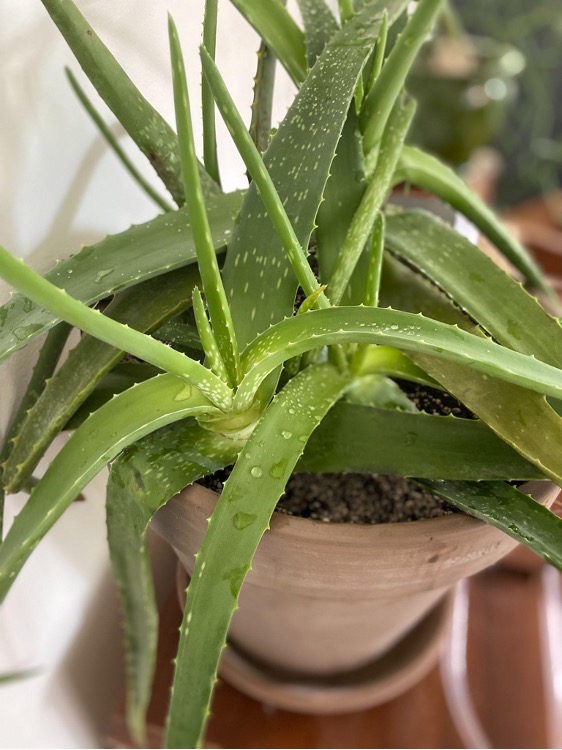This is one of our Top 12 most popular articles based on customer feedback and engagement. Originally published in August 2021, it has been updated with images and product links. As always, please leave us your comments below!

Most people recognize Aloe vera as an effective treatment for sunburn but its uses go beyond burn care. The gel found inside the leaves of the plant can be applied directly to the skin to treat acne, heal dry skin, and to cut the itch of a bug bite. It can also be taken internally to improve digestive issues, and can even be used as an alternative to a commercial cloning gel for plant propagation. By growing your own, you’ll have access to the purest, cleanest, chemical and dye-free Aloe vera for your home apothecary!

Aloe is a member of the succulent plant species and is believed to have originated in the arid Arabian desert. There are some 500 species of Aloe, only some of which contain medicinal properties. Aloe vera has thick serrated leaves that are lance-shaped, starting wider at their base and then tapering to a point. The root systems of Aloe plants tend to grow wide, but not deep into soil. Therefore, when transplanting Aloe it is common practice to move them into a wider, but not deeper pot, as they grow. One important feature of the root system is that it forms arbuscular mycorrhiza, a fungus that penetrates inside the roots to allow better access to mineral nutrients in the soil – cool, huh?

Aloe is fairly easy to grow, long-living, and requires minimal maintenance. Aloe thrives in bright direct light but too much sun can sunburn your plant which appears as reddish or gray scorch spots on the leaves. If you’re planning on moving your Aloe outdoors for the summer, gradually increase its exposure to sunlight. Plants grown outdoors often bloom in the spring with yellow and red, tubular flowers on tall flower spikes. However, Aloe rarely blooms indoors.
When watering Aloe, allow the potting medium to be mostly dry before watering again. The leaves on a dehydrated Aloe will wrinkle and you may notice brown leaf tips. It’s best to water before reaching this level of dryness. Also, be careful not to allow water to settle in the crevices at the base of leaves as this can cause the plant to rot. Overwatering results in black spots forming on the leaves and this is a signal to stretch watering. An Aloe in a 10” diameter pot will need watered no more than once per month during the growth season. During the winter, Aloe will go mostly dormant and watering will occur more sparingly.
Aloe will grow best when temperatures range from 65-75°F with low humidity (40% is ideal). Cactus soil is ideal for Aloe because it is fast-draining. You can also add 1 part horticultural sand to 2 parts all-purpose potting mix to achieve the right blend. The best time to fertilize an Aloe plant is spring through fall, feeding monthly with a fertilizer formulated for succulents and cacti. It is not necessary to feed your plant in the winter when growth is slow. Aloe vera is most susceptible to spider mites, scales, and mealy bug so check occasionally for pests and treat them immediately.

Propagating Aloe is quite simple, as they freely produce offsets – also known as plantlets, pups, or “babies” – that can be easily separated from the mother plant to produce an entirely new plant. We recommend using pruning shears, scissors, or a sharp knife when separating the offset. Allow the offset to sit out of the soil for several days as this allows the new plant to form a callous over the cut, which helps protect from rot. Keep the offset in a warm location with indirect light during this time. Once the offset has calloused over, plant into a new pot and place a sunny location. We often recommend terra cotta pots for Aloe since they are porous and allow the soil to dry out quicker than glazed or plastic. However, you can adjust your watering to accommodate the conditions.

Aloe vera is a truly wonderful plant to have in your houseplant collection. With its many uses it is a good one to have around and to share for generations to come. What are your favorite ways to use Aloe? We’d love to hear!


Joyce Randazzo 09 Randazzo says
I just lost a beautiful big aloe Cactus I had it in the house for over a year and I put it out in the sun this summer and with the hate it just killed it so I’m trying to save one piece that I have and see what happens can you take cuttings or do you have to do it the way you showed cuz I don’t have I have just leave thank you
brian says
Apologies for the late response. Summer vacation was great!
As for your aloe, you can try to propagate your cutting. Usually, this method doesn’t work for this species. Best of luck!